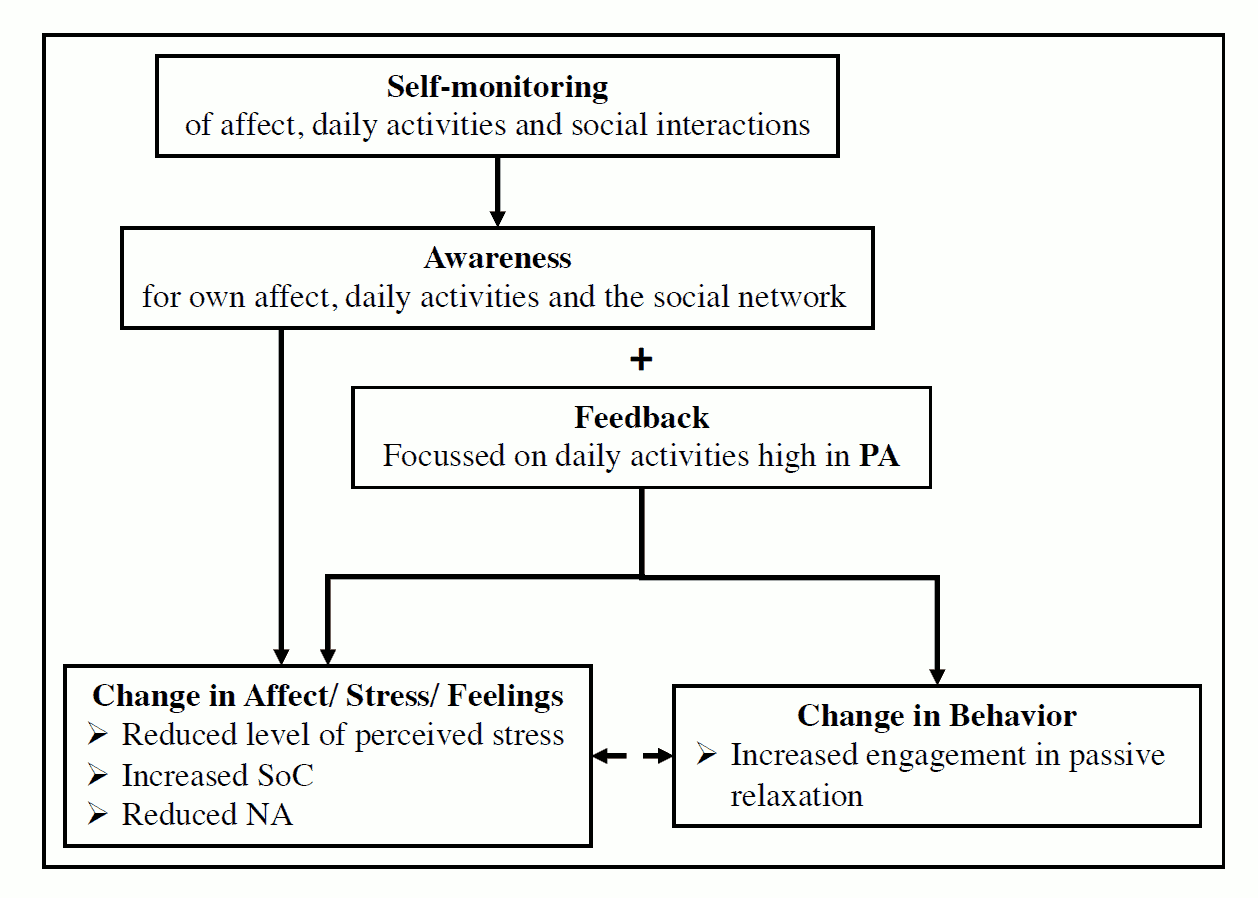Personalized feedback and sustained support for carers using the experience sampling method
Guidance
When using smartphone-based digital self-monitoring/experience sampling in carers of people with dementia, consider providing personalized feedback to promote emotional well-being and stimulate the undertaking of more activities they enjoy (e.g. relaxation activities).
Explanation and examples
‘Experience sampling’ (ESMExperience Sampling Method Data collection method/ ‘digital diary’ using a mobile device or smartphone app to collect information on an individual’s behaviour, affect and social context in everyday life; can be used in an intervention approach to raise awareness for positivise activities through self-monitoring and to guide personalized feedback)-based smartphone apps can offer solutions to raise awareness of enjoyable activities, strengthen learned coping strategies, and provide (long- term) support in everyday life. The ‘Partner in Sight’ intervention has been found to decrease perceived stress as well as negative affect, and to increase sense of competence in carers.
However, an increase in passive relaxation activities was only achieved with personalized feedback. Long-term support could be achieved by adding additional features, such as booster sessions, micro interventions (short version of the original intervention) or ad-hoc counseling after the main intervention period, through cost-effective and common technologies (smartphone apps, webpages, emails, telephones).
Themes
Carers' coping Experience Sampling Method (ESM) Long-term support Personalized feedback Sustained support
Target groups
Clinicians supporting carers Researchers providing/designing caregiver interventionsType of evidence
Follow-up results of the ESM ‘Partner in Sight’ intervention
References
Bartels, S.L., Van Knippenberg, R.J.M., Viechtbauer, 8., Simons, C.J.P., Ponds, R.W., et al. Intervention Mechanisms of an Experience Sampling Intervention for Spousal Carers of People with Dementia: A Secondary Analysis, Aging & Mental Health 2020 Dec 9:1-9. doi.org/10.1080/13607863.2020.1857692
Bartels, S. L., van Knippenberg, R. J., Köhler, S., Ponds, R. W., Myin-Germeys, I., Verhey, F. R., & de Vugt, M. E. (2019). The necessity for sustainable intervention effects: lessons-learned from an experience sampling intervention for spousal carers of people with dementia. Aging & Mental Health, 24(12)2082-2093.
Van Knippenberg, R. J. M., De Vugt, M. E., Ponds, R. W., Myin-Germeys, I., & Verhey, F. R. J. (2018). An experience sampling method intervention for dementia caregivers: results of a randomized controlled trial. The American Journal of Geriatric Psychiatry, 26(12), 1231-1243.





